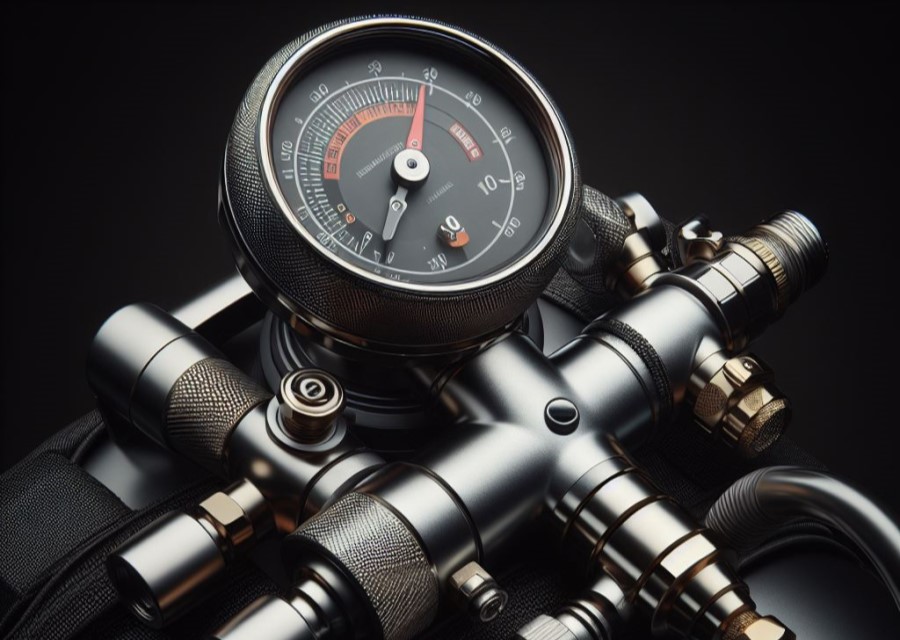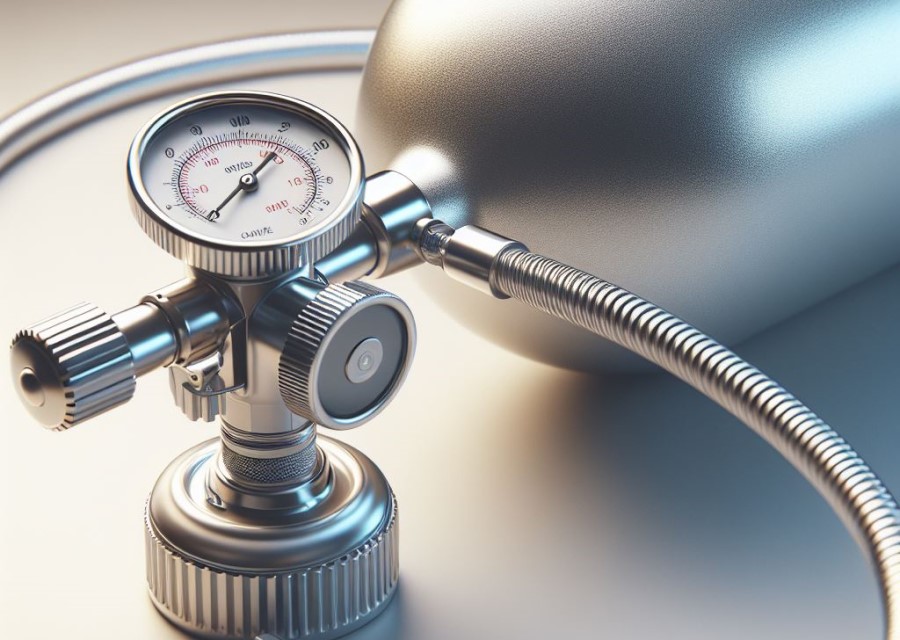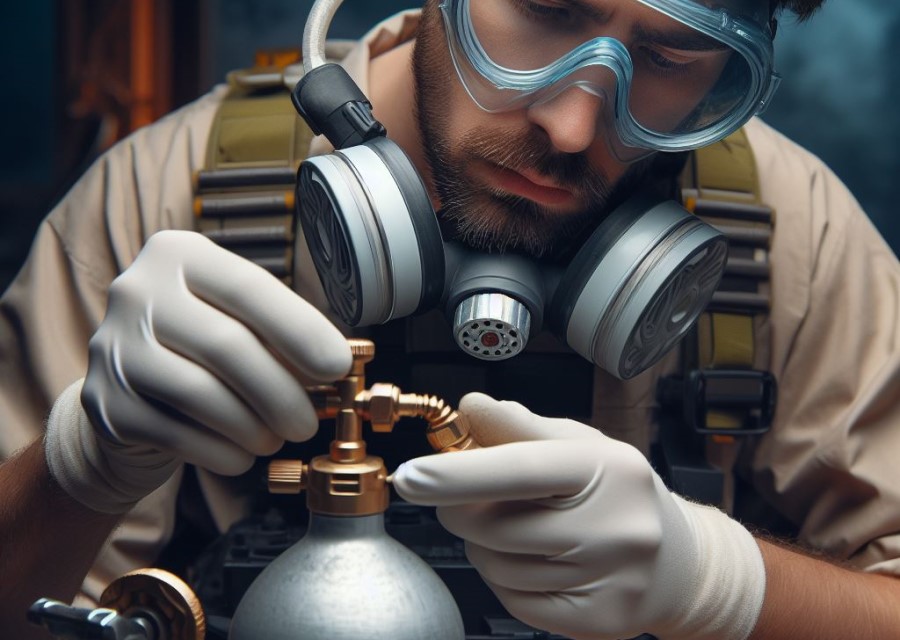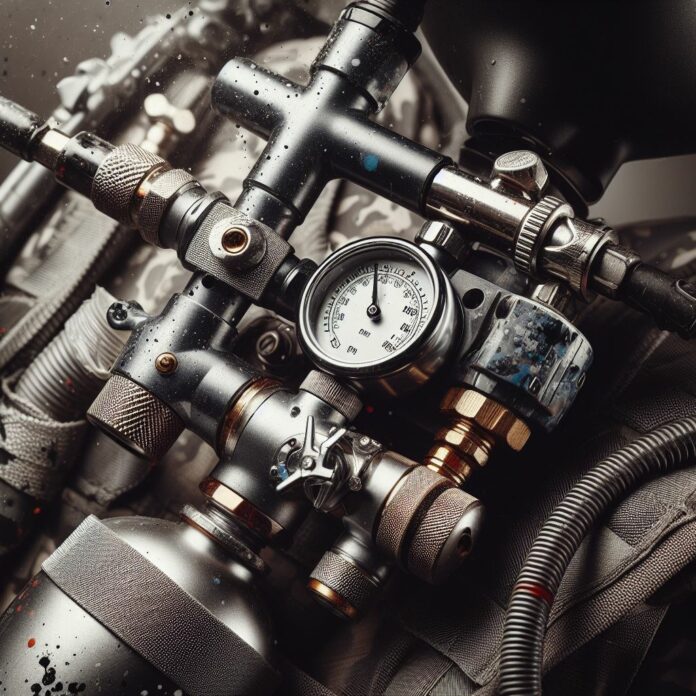Paintball regulators play a crucial role in maintaining a consistent and safe level of air pressure for paintball markers. Installing a paintball regulator correctly is essential for optimal performance and player safety. In this guide, we will provide you with a step-by-step process on how to install a paintball regulator effectively.
Before we delve into the installation process, let’s first understand the significance of a paintball regulator. A paintball regulator controls the output pressure from the air tank to ensure that it is at a safe and consistent level. This is important as it affects the velocity and accuracy of the paintball shots.
To install a paintball regulator, you will need a few tools and materials. These include a wrench, Teflon tape, a compatible paintball regulator, and safety goggles.
Now, let’s proceed with the step-by-step guide on installing a paintball regulator. This includes preparing the regulator, removing the old regulator (if applicable), preparing the tank, installing the regulator onto the tank, tightening the regulator, and checking for leaks. Following these steps accurately will ensure a successful installation without any complications.
We will provide some essential tips and safety precautions to keep in mind during the installation process to avoid any accidents or damage.
Finally, we will address some frequently asked questions about paintball regulators, such as the purpose of a regulator, the compatibility of different regulators with paintball guns, and the recommended replacement intervals for regulators.
By the end of this comprehensive guide, you will have a clear understanding of how to install a paintball regulator properly, allowing you to enhance your paintball experience with a reliable and efficient marker setup.
What is a Paintball Regulator and Why is it Important?

A paintball regulator, also known as a paintball marker, is a crucial component that controls and regulates the air pressure delivered to the paintball. It is important for a variety of reasons:
- Consistent Velocity: A paintball regulator ensures a consistent velocity of the paintballs, promoting accuracy and fairness in the game.
- Efficient Air Usage: By regulating the air pressure, a paintball regulator maximizes the utilization of air, allowing for more shots per air tank fill.
- Preventing Damage: The regulator plays a vital role in safeguarding the internal components of the paintball marker by controlling the air pressure and preventing spikes that could result in malfunction or breakage.
- Safety: Maintaining a properly functioning regulator ensures the safety of players by maintaining a safe and controlled air pressure level within the paintball marker.
Pro-tip: To ensure optimal performance, it is essential to regularly maintain and service your paintball regulator. Clean the regulator and o-rings, following the manufacturer’s guidelines for proper maintenance and care.
Tools and Materials Required for Installing a Paintball Regulator

When installing a paintball regulator, it is important to have the necessary tools and materials. Here is a checklist of what you will need:
- A paintball regulator
- An adjustable wrench or a regulator tool
- Thread seal tape
- A marker or pen
- A cloth or towel
- A paintball marker
- A CO2 or compressed air tank
Remember to check that all tools and materials are in good condition and functioning properly before installing the paintball regulator.
It is also crucial to familiarize yourself with the manufacturer’s instructions or guidelines for installation to ensure both safety and optimal performance.
Step-by-Step Guide: How to Install a Paintball Regulator
Looking to install a paintball regulator? We’ve got you covered with a step-by-step guide that will make the process a breeze. In this guide, we’ll walk you through each stage, from preparing the regulator to checking for leaks.
By the end, you’ll have the confidence and know-how to successfully install your paintball regulator and get back to the game in no time. So, let’s dive in and get started on this exciting DIY project.
Step 1: Prepare the Regulator
To prepare the regulator for installation, follow these steps:
1. Inspect the regulator: Check for any damage or wear on the regulator. Make sure all parts are intact and in good condition.
2. Gather the necessary tools: Collect the tools required for the installation, such as a wrench, Teflon tape, and a rag for cleaning.
3. Clean the regulator: Use a damp cloth or rag to clean any dirt or debris from the regulator. Ensure it is free from any contaminants that could affect its performance.
4. Apply Teflon tape: Take the Teflon tape and wrap it around the threads of the regulator’s inlet. This helps create a tight seal when the regulator is attached to the tank.
5. Check compatibility: Ensure that the regulator you are installing is compatible with your specific paintball gun and tank. Refer to the manufacturer’s instructions or consult a professional if needed.
By following these steps, you can properly prepare the regulator for installation, ensuring a smooth and successful process.
Step 2: Remove the Old Regulator
When installing a paintball regulator, it is essential to follow these steps to remove the old regulator:
- Before proceeding, ensure that the air tank is completely empty and detached from your paintball gun.
- Locate the old regulator, which is typically attached to the bottom of the air tank.
- Using a wrench, loosen the screws or fittings that secure the old regulator to the air tank.
- Gently remove the old regulator from the tank, taking care not to damage any surrounding parts or the tank itself.
- After removing the old regulator, inspect the area where it was attached for any debris or residue. Clean if necessary.
The removal of the old regulator is a crucial step in the process of installing a paintball regulator. This step allows for a fresh installation and ensures that the new regulator can be properly attached to the air tank. By following these steps, you can easily remove the old regulator and proceed with the installation process.
Step 3: Prepare the Tank
In order to install a paintball regulator, you need to follow these steps to prepare the tank:
- Empty the tank: Prior to preparing the tank, ensure that it is empty of any gas or paintball propellant. This will prevent any accidents or leaks during the installation process.
- Clean the tank: Use a clean cloth or paper towel to wipe down the exterior of the tank. This will remove any dirt or debris that may interfere with the installation or cause damage to the regulator.
- Prepare the tank: Take a close look at the tank, checking for any damage or signs of wear and tear. Make sure there are no dents, cracks, or other defects that could affect the performance or safety of the regulator.
- Check the tank threads: Examine the threads on the tank to ensure they are clean and in good condition. If there are any signs of damage or buildup, use a thread tap or brush to clean them before proceeding.
Fact: Properly preparing the tank before installing a paintball regulator is essential for ensuring a secure and efficient setup. Taking the time to empty, clean, inspect, and check the tank threads will help prevent any issues and ensure a smooth installation process.
Step 4: Install the Regulator onto the Tank
To install the regulator onto the tank, follow these steps:
- Ensure that the tank valve is closed before beginning the installation process.
- Take the regulator and align it with the tank valve, ensuring that the threads match.
- Gently screw the regulator onto the tank valve in a clockwise direction.
- Tighten the regulator onto the tank using a regulator wrench. Apply firm pressure to ensure a secure connection, but be careful not to overtighten as it may damage the regulator or tank.
- Step 4: Install the Regulator onto the Tank
- Check for any leaks by applying a soapy water solution to the regulator and tank connection.
- If any bubbles appear, this indicates a leak. In that case, carefully tighten the regulator further or replace any damaged parts.
- Once the regulator is securely installed and there are no leaks, the tank is now ready for use.
Remember to always follow safety precautions and refer to the manufacturer’s instructions for specific details on installing the regulator onto the tank.
Step 5: Tighten the Regulator
Step 5: Prepare the necessary tools and materials for tightening the regulator.
Step 5: Locate the adjustment screw on the regulator. This screw is used to tighten the regulator.
Step 5: Using a suitable screwdriver or tool, turn the adjustment screw clockwise to tighten the regulator.
Step 5: Ensure that the regulator is securely tightened, but be careful not to overtighten, as this can damage the regulator.
Step 5: Check for any leakage or movement in the regulator after tightening. If any issues are found, repeat the tightening process or seek professional assistance.
Step 6: Check for Leaks
- Start by ensuring that all connections between the regulator and the tank are properly tightened. This is an essential step in maintaining the safety and efficiency of the system.
- Slowly open the valve to allow air or gas to flow into the system. This will help you identify any possible leaks.
- Carefully inspect the regulator and all connections for any signs of leaks, such as hissing sounds or the presence of bubbles. It’s important not to overlook even the smallest indication of a leak.
- If you spot a leak, immediately turn off the valve and tighten the connection that is causing the issue. This will help prevent any further leakage.
- After making any adjustments, reopen the valve and repeat the inspection process to ensure that the leak has been resolved. It’s crucial to be thorough in addressing any leaks.
- If there are no leaks detected, you can proceed with using the paintball regulator. However, it’s always a good idea to periodically check for leaks as part of your regular maintenance routine.
Tips and Safety Precautions

When it comes to installing a paintball regulator, taking the necessary safety precautions is paramount. Here are some tips and safety precautions to ensure a safe installation:
1. Wear protective gear:
Always wear goggles, gloves, and other safety equipment to protect yourself from any potential accidents.
2. Check for leaks:
Before installing the regulator, make sure to check for any leaks in the paintball gun system. A leak could indicate a problem that needs to be addressed before proceeding.
3. Follow manufacturer instructions:
Read and follow the manufacturer’s instructions carefully during the installation process. Different regulators may have specific requirements and steps that need to be followed.
4. Use the right tools:
Ensure that you have the necessary tools for the installation and use them correctly. Using improper tools or techniques can cause damage to the regulator or other components.
5. Double-check connections:
After installing the regulator, double-check all connections to ensure they are tight and secure. Loose connections can lead to leaks or other malfunctions.
6. Test the regulator:
Once the installation is complete, perform a pressure test to ensure that the regulator is functioning properly. This will help identify any issues before using the paintball gun.
What is the purpose of a paintball regulator?
A paintball regulator serves the purpose of controlling the pressure of the air that propels the paintballs from the gun. It ensures a consistent and safe velocity for accurate shots.
The regulator works by reducing the high-pressure air from the tank to a lower, more manageable pressure that is suitable for the paintball gun to operate efficiently. This helps prevent the gun from shooting too hot, which could cause potential injuries to players or damage to the equipment.
By maintaining a steady pressure, the paintball regulator ensures consistent shot velocities, improving accuracy and reliability during gameplay. It also helps prevent air leaks and fluctuations in pressure, which could negatively affect the performance of the paintball gun.
Pro-tip: When using a paintball regulator, it’s crucial to regularly check and maintain the regulator’s condition. Keep an eye on any signs of wear or damage, and follow the manufacturer’s guidelines for maintenance and replacement. Additionally, always use a regulator that is compatible with your specific paintball gun to ensure optimal performance and safety.
Can I use any type of regulator for my paintball gun?
When it comes to using a paintball gun, it is important to use the right type of regulator. You cannot use any type of regulator for your paintball gun.
The regulator is responsible for controlling the pressure of the gas that propels the paintballs. Different paintball guns require specific types of regulators to function properly.
Using the wrong type of regulator can result in inconsistent shooting, poor accuracy, and potential damage to your paintball gun.
Therefore, it is essential to ensure that you choose a regulator that is specifically designed for your paintball gun model.
Before purchasing a regulator, carefully read the product specifications and consult your paintball gun manufacturer’s recommendations.
Remember, using the right regulator for your paintball gun will ensure optimal performance, accuracy, and longevity of your equipment.
Paintball was invented in the 1980s by Charles Gaines and Bob Gurnsey. Originally, it was used as a tool for testing forestry equipment but gained popularity as a recreational activity.
Since then, paintball has evolved into a competitive sport with various formats and tournaments worldwide. The use of paintball guns with specific regulators became a crucial aspect of the game, ensuring fair and consistent gameplay.
Today, paintball is enjoyed by people of all ages, offering thrilling experiences and fostering teamwork and strategy on the field.
How Often Should I Replace My Paintball Regulator?
The lifespan of your paintball regulator depends on various factors, including how often you should replace it. Typically, it is advisable to replace your paintball regulator every 1-2 years or after 3,000-5,000 shots, whichever comes first. If you want to determine if your regulator needs replacement sooner, regular maintenance and inspections can be helpful.
The durability of your paintball regulator can be influenced by several factors. These factors include the quality of the regulator, how frequently you use it, and the intensity of play. Should you observe any leaks, inconsistent pressure, or difficulties adjusting the output pressure, it may be time to consider replacing your regulator.
Ensuring a longer lifespan for your regulator can be accomplished by regularly inspecting and cleaning it. Make sure to adhere to the manufacturer’s guidelines for maintenance and lubrication. Properly storing your equipment in a clean and dry environment can also help prevent damage and extend the life of your regulator.
Remember that the proper functioning of your paintball gun and its performance rely on a well-functioning regulator. By regularly replacing your paintball regulator, you can ensure optimal pressure control and consistent performance on the field.
For accurate and detailed information on replacement intervals, consult the manufacturer’s recommendations and guidelines specific to your paintball regulator.

